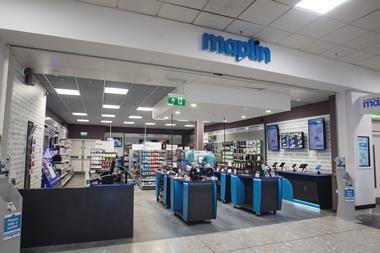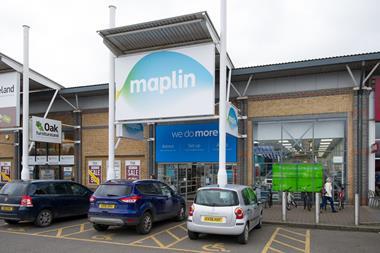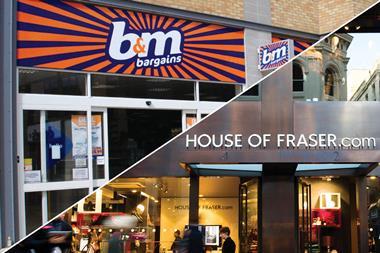Maplin has issued “robust” full-year results and lifted the lid on renegotiated banking facilities after credit insurers reportedly scaled back their exposure.
The electricals specialist issued its results earlier than planned in order to reassure suppliers following reports that credit insurers had reduced their coverage.
It said that it agreed new banking facilities late last year and has commenced talks with credit insurers to allay any market concerns.
Maplin’s new banking facilities have given it a buffer and “sufficient headroom”, it said, to push ahead with its new strategy “should the ongoing challenging retail market conditions continue”.
Full-year results
Underlying EBITDA slid nearly 7% to £12.3m as Maplin invested in refreshing its brand, improving its digital infrastructure, expanding its services propositions and developing its ‘store of the future’ pilot.
The investment forms part of Maplin’s 2020 strategy, aimed at futureproofing the business.
Sales nudged up 0.5% to £236m in the 12 months to March 18, while like-for-likes rose 0.3%.
Maplin said sales of smart home products, for which it has made more space in stores, rocketed 161%.
Black Friday success
Maplin said Black Friday was a success and a “positive indicator for Christmas trade” as sales rose 5% year-on-year and the retailer achieved its biggest ever trading day online.
Since its year-end, Maplin has updated 130 of its larger shops, including 10 conversions to its store of the future format.
It has also launched a new website, and concession partnerships with Game and smartphone repair service iSmash.
Maplin chief executive Oliver Meakin said: “We are confident that Maplin has a winning strategy and the financial flexibility to navigate what is a challenging retail backdrop and to fully realise the opportunity that our leadership in Smart Home presents.
“I believe that multichannel will ultimately win out over online-only models, with the Maplin full service and expertise our unique selling points for the majority of consumers who want the benefits that technology offers but are uncertain how to best harness them.”


























No comments yet